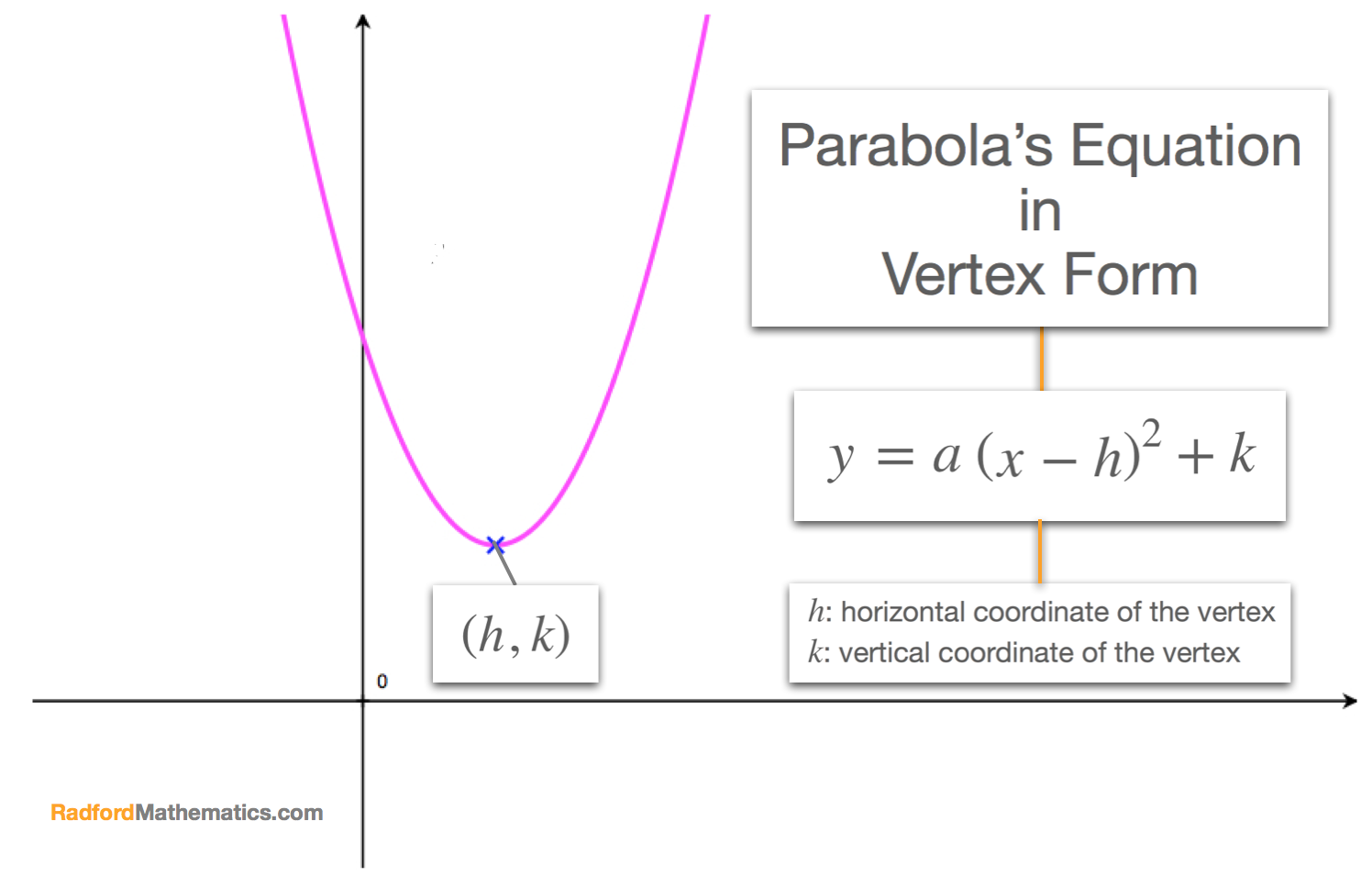
In the previous section, we learnt how to write a parabola in its vertex form and saw that a parabola's equation: \[y = ax^2+bx+c\] could be re-written in vertex form: \[y = a\beginx - h \end^2+k\] where:

We can use the vertex form to find a parabola's equation. The idea is to use the coordinates of its vertex (maximum point, or minimum point) to write its equation in the form \(y=a\beginx-h\end^2+k\) (assuming we can read the coordinates \(\beginh,k\end\) from the graph) and then to find the value of the coefficient \(a\).
This is explained in the step-by-stem mathod, below, as well as in the tutorials.

Given the graph of a parabola for which we're given, or can clearly see:
This two-step method is better/further explained in the following tutorial, take the time to watch it now.
In the following tutorial we learn how to find a parabola's using the coordinates of its vertex as well as the coordinates of its \(y\)-intercept.
Your browser does not support the video tag.
Using the two-step method we've just learned, find the equation of each of the following parabola in the following two forms:

Note: this exercise can be downloaded as a worksheet to practice with worksheet
Select the question number you'd like to see the working for: